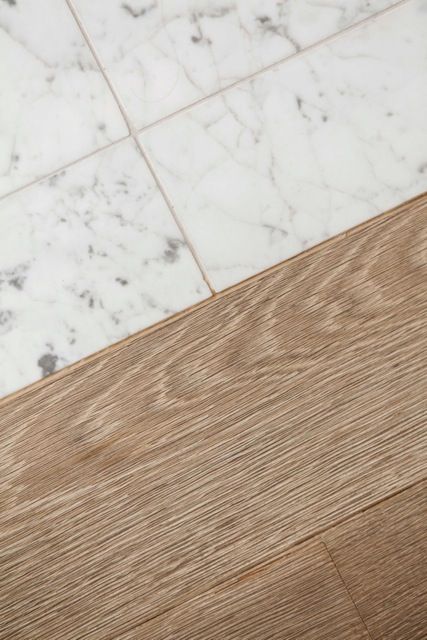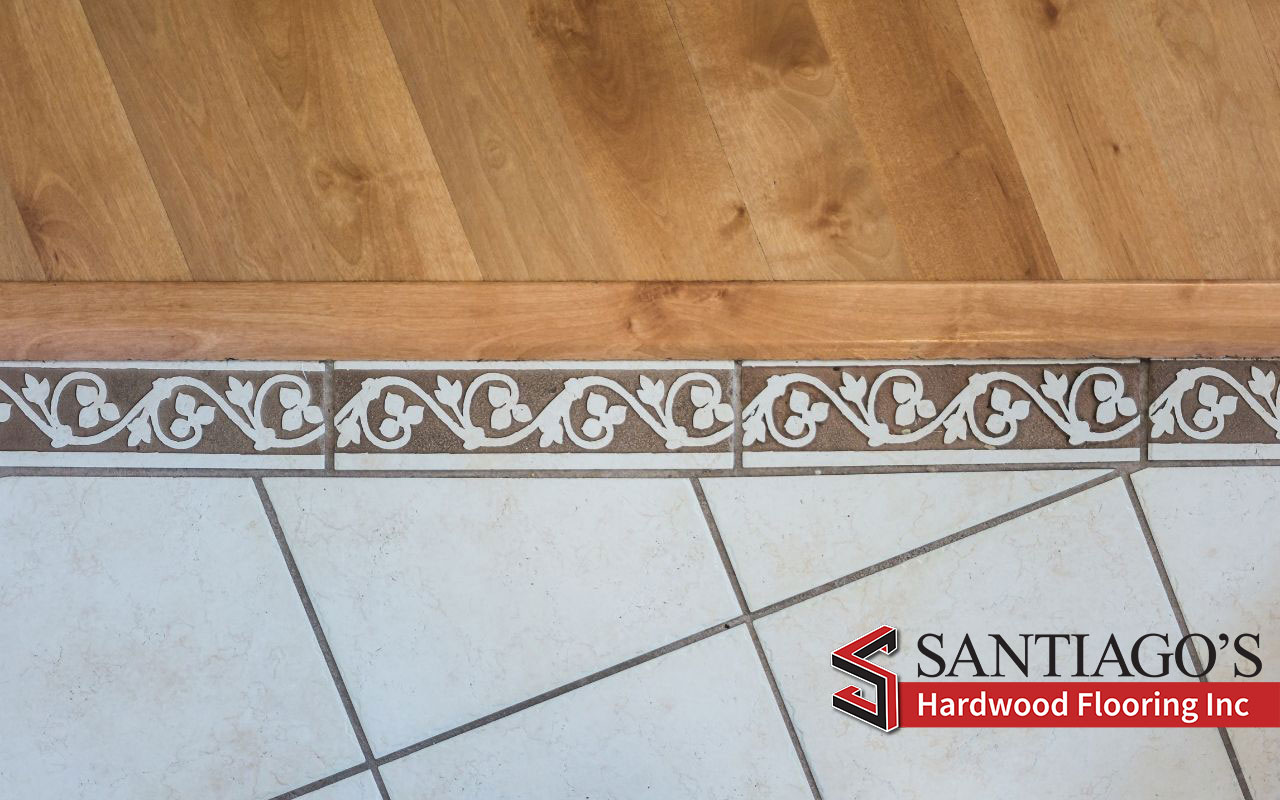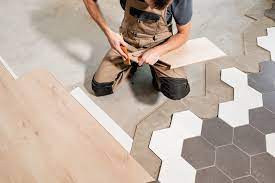To combine tile and wood flooring, use transition strips and consider layout patterns. Ensure both materials meet flush for a cohesive look.
Combining tile and wood flooring offers a unique opportunity to blend the warmth of wood with the durability of tile, creating a visually striking and functional space in your home. Transition strips, which come in various materials like wood, metal, or rubber, act as a bridge to seamlessly connect the different levels and textures of the flooring.
An effective design strategy involves aligning the flooring materials in a way that complements the flow and furniture placement in the room. Selecting the right color combination and grout color can also enhance the transition and contribute to a unified interior design. Careful planning and attention to detail will result in a stunning and harmonious combination of tile and wood in any space.
Introduction To Mixed Flooring Concepts
Exploring the aesthetic appeal of mixed flooring can be exciting. Tile and wood flooring blend creates stunning visuals. Harmony between different materials is both striking and functional. Natural wood’s warmth meets the durability of tile, offering a perfect balance. Designers often suggest this combination for a customized and unique look.
Before mixing flooring materials, practical considerations are vital. Think about the changes between wood and tile heights. Ensure smooth transitions to prevent trips and falls. Wood expands and contracts, while tile does not. So, a proper installation is crucial to handle this movement.
The hybrid flooring design trend is growing. Stylish and versatile, it suits many homes. Recent trends include large-format tiles with wide wood planks. It is merging the best of both worlds for a modern, functional flooring solution.
Planning And Designing For A Cohesive Look
Selecting compatible wood and tile materials is essential for a cohesive look. For a harmonious design, choose colors that complement each other. Wood grains and tile patterns should also work well together. Consider the room’s size and lighting when planning.
Achieving texture harmony involves mixing materials thoughtfully. Smooth tiles with textured wood create interest. Yet, they should not clash. Use transition strips where tile meets wood. Strips should match the dominant material’s tone.
For transitions between tile and wood, there are many ideas to explore. A flush transition is sleek and modern. A more traditional look might include a T-molding. Both options provide a clean edge between the two types of flooring.
Effective space planning ensures visual balance. Arrange tiles and wood planks with the room’s function in mind. Long planks lead the eye through a space. Larger tiles may make a small room appear bigger. Always maintain a sense of flow throughout the space.
Installation Techniques And Best Practices
Preparing the subfloor is crucial for a flawless surface. Your subfloor must be clean, level, and dry. Ensure both tile and wood have a solid base. This prevents cracks and movement.
For laying tile next to wood, precise measurements are key. You’ll want to align the flooring carefully. Use a laser level or chalk line for straight edges.
- Transition strips smooth the seam where tile meets wood.
- T-Moldings help with slight height differences.
Grouting and sealing are final steps. Match grout color to your tile. Sealant protects the floor from moisture and wear.

Maintenance And Longevity Of Mixed Flooring
Maintaining mixed flooring requires special attention to detail. A regular cleaning regime is essential to preserve its appearance and functionality. For wood flooring, use a gentle cleaner and avoid excessive water. Tile areas benefit from mild detergents and can handle more moisture. It is vital to promptly clean spills to prevent stains or damage.
Addressing expansion and contraction challenges is crucial in mixed flooring. A stable environment is key; aim to keep humidity and temperature levels consistent. Ensure proper installation with adequate expansion gaps to allow for natural movement. Failure to do so can cause buckling or gaps.
Cleaning hybrid floors involves combining wood and tile maintenance tips. Use a vacuum with a soft brush for daily cleanup. A well-wrung mop prevents excess water on wood. Address repairs quickly to avoid further issues. Replacement parts should match the existing floor to ensure visual consistency.
Real-world Examples And Case Studies
Successful tile and wood flooring blends can transform a home. Inspiration comes from real-world examples where designers mix oak planks with ceramic pieces. Homes often feature chic patterns, like a herringbone or chevron, next to tiles.
Flooring experts recommend looking at the room’s size. Large tiles work best in spacious areas. Wood planks bring warmth, so professionals mix them wisely. They keep grout lines aligned for a seamless look.
- DIY projects show creativity but come with risks.
- Pre-planning is key to avoid mismatched patterns.
- Use transition strips to blend materials safely.
- For best results, seek advice from a seasoned flooring pro.

Conclusion And Future Outlook
Combining tile and wood flooring needs careful planning. Respect each material’s texture and expansion properties. Use transition strips to seamlessly blend the two. Keep wood floors away from water-prone areas to prevent damage.
As technology advances, expect more versatile solutions. These may bridge the different expansion rates of tile and wood. Designers will likely introduce innovative patterns. These will support easier combinations of the two flooring types.
- Always consider the room’s function before choosing materials.
- Ensure proper leveling to avoid uneven transitions.
- Use compatible color schemes for a cohesive look.
- Select the right transition material for durability.
With the right approach, mixed flooring designs can remain beautiful for years. They will display a home’s unique character and style.
Conclusion
Blending tile with wood flooring elevates your space, merging durability with warmth. Mastering this combination requires careful planning, but the payoff is remarkable. By following these tips, you’ll ensure a stunning, cohesive look. Embrace the beauty of mixed materials and watch your home’s appeal soar.
Ready to transform your floors? Start your journey now.




